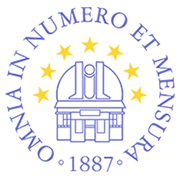
This research group is mainly engaged in the research of active galactic nuclei and their emission regions. Other extragalactic objects such as gravitational lenses, gamma rays, supermassive binary black holes, etc., are also the subject of study. Research is carried out by spectroscopic and photometric analysis of the radiation of objects, as well as by monitoring changes in their radiation over time. The members of the team are actively participating in one of the world's largest sky survey projects that will be carried out by the Vera Rubin Observatory in Chile (Legacy Survey of Space and Time project - LSST), which should begin work in 2024 (rubinobservatory.org). Also, since 2013, our group has been active in the international project Whole Earth Blazar Telescope (WEBT, www.oato.inaf.it), which deals with the studies of blazars. WEBT currently includes about 40 observatories, and our group is included in the monitoring program with the Milanković (1.4m) and Nedeljković (60cm) optical telescopes located at the Astronomical Station Vidojevica.
The goals of this research group are:
- Investigation of the phenomena of active galactic nuclei, gravitational lenses and gamma rays using spectroscopic, photometric and polarimetric methods. Modeling the structure and processes inside active galactic nuclei. Study of accretion and outflow of gas and dust using numerical simulations of radiation transfer (bowie.aob.rs). Study of brightness variability, tracking spectropolarimetric changes in time and their modeling, including problems related to binary super-massive black holes.
Scientific and professional support for the Serbian contribution to the LSST project, namely in the observational part, where the 1.4 m telescope Milanković at th Astronomical Station Vidojevica is included, which will be a companion telescope for the large telescope of the LSST project. Also, members of the group participate in the development of software for the LSST project, where tools are developed to study the variability of the radiation of a large number of objects that will be observed at the Vera Rubin Observatory during the LSST project (several million quasars are expected to be observed).
Development and implementation of instrumentation (spectro-polarimeter) for the 1.4 m Milanković telescope, which would enable the telescope to be equipped for spectroscopic and polarimetric observations of objects in addition to photometry. As part of this, observational activity on the 1.4 m telescope and participation in a wider project for long-term monitoring of active galactic nuclei is foreseen.
Group members:
-
Jelena Kovačević Dojčinović (PI), Associate Research Professor,
-
Luka Č. Popović, Full Research Professor,
-
Marko Stalevski, Associate Research Professor,
-
Maša Lakićević, Assistant Research Professor,
-
Đorđe Savić, Assistant Research Professor,
-
Oliver Vince, Associate Research Professor,
-
Slađana Marčeta Mandić, Research Assistant



